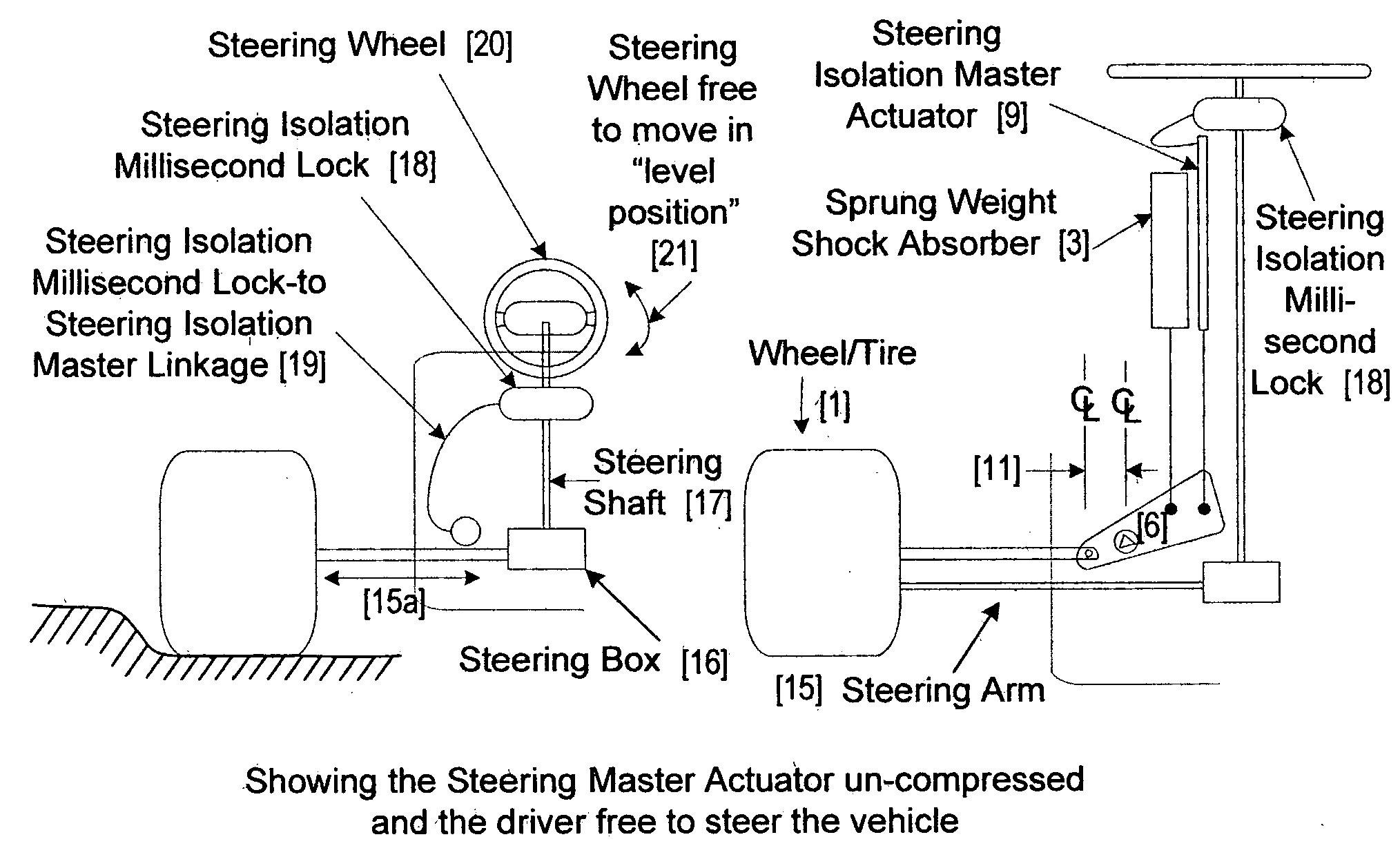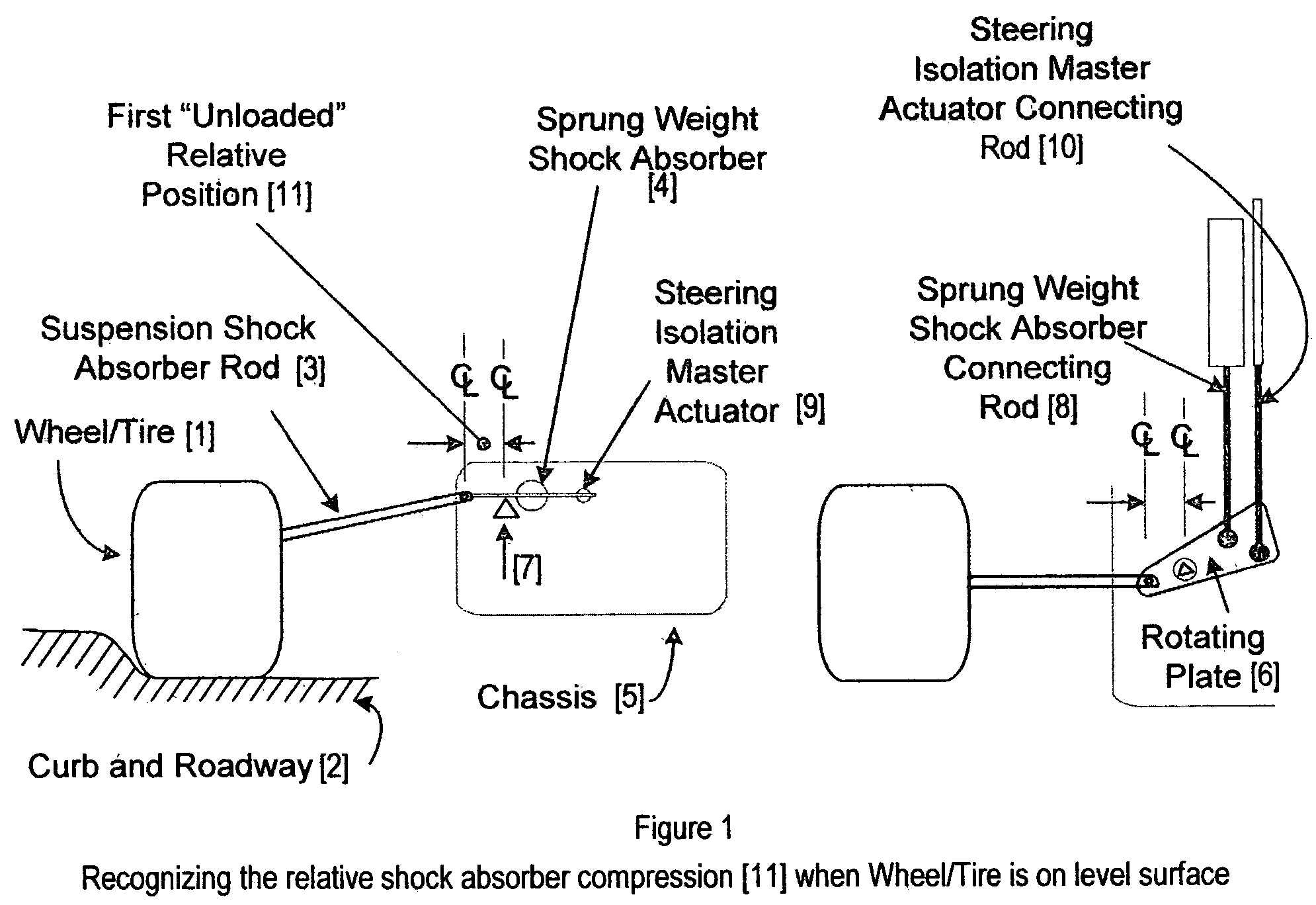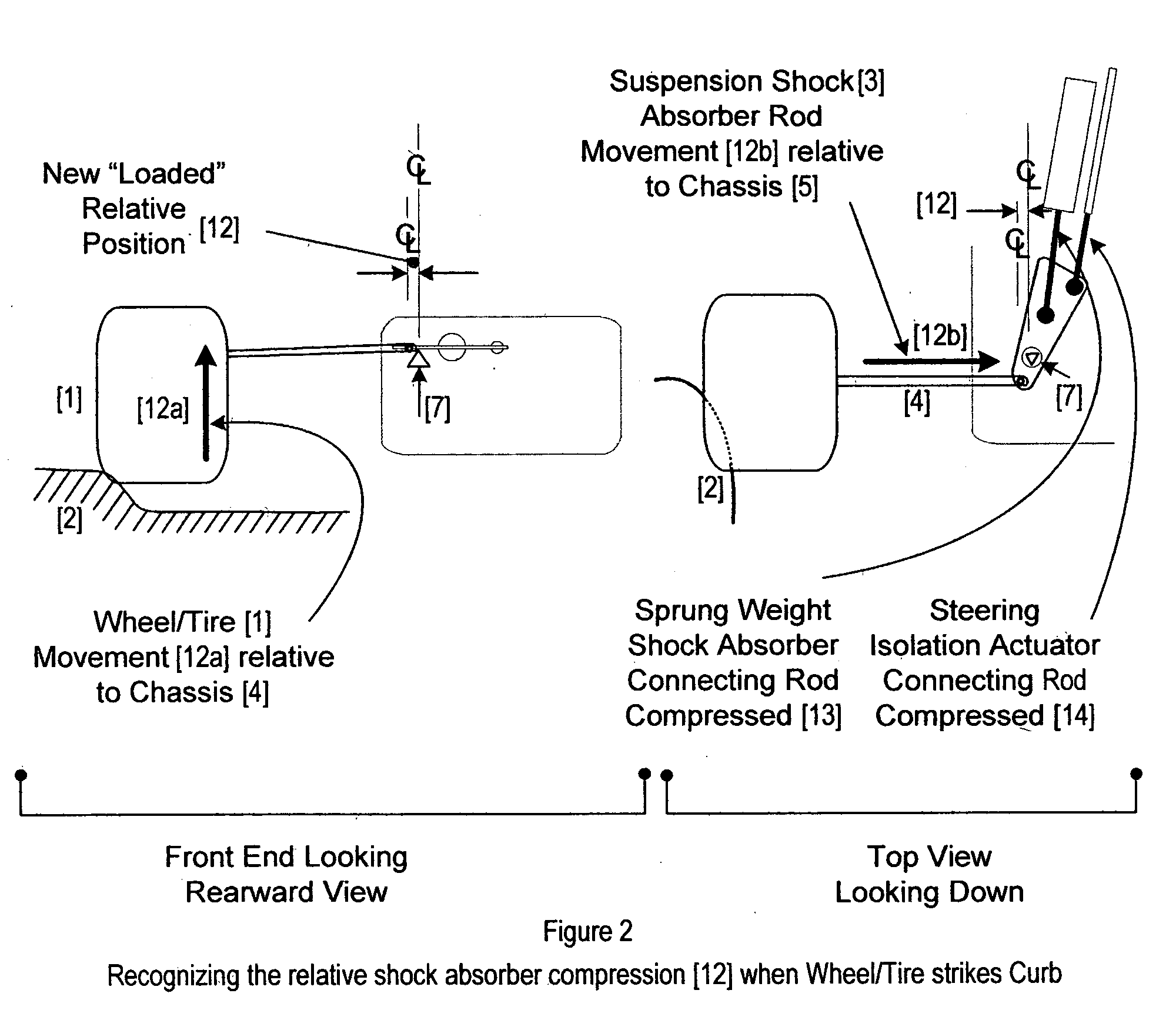Method to isolate vehicle steering shock from the driver
- Summary
- Abstract
- Description
- Claims
- Application Information
AI Technical Summary
Benefits of technology
Problems solved by technology
Method used
Image
Examples
Embodiment Construction
[0038]The easiest and most convenient illustrative example of the present invention is to consider the vehicle in which the method invention has been applied-to as being a racing car. These cars are routinely and intentionally driven over Curbs placed at the edge of a racing surface to discourage the driver from using the surface next to the intended racing surface to gain a speed / time advantage. Accordingly, the action / reaction scenario is, for the purposes of describing the method of present invention, straight-forward in operation and operational environment when racing cars are presented as the illustrative example.
[0039]The process of the method of the present invention is to simply add-on to the existing (current generalized / stylized racing car practice) shock absorbing linkages. (Referring to FIG. 1): the vehicle is shown in a First “Un-Loaded” Relative Position [11]. The steered Wheel / Tire combination [1] is shown in contact with the flat portion of the Curb and Roadway [2] ...
PUM
 Login to View More
Login to View More Abstract
Description
Claims
Application Information
 Login to View More
Login to View More - R&D
- Intellectual Property
- Life Sciences
- Materials
- Tech Scout
- Unparalleled Data Quality
- Higher Quality Content
- 60% Fewer Hallucinations
Browse by: Latest US Patents, China's latest patents, Technical Efficacy Thesaurus, Application Domain, Technology Topic, Popular Technical Reports.
© 2025 PatSnap. All rights reserved.Legal|Privacy policy|Modern Slavery Act Transparency Statement|Sitemap|About US| Contact US: help@patsnap.com



